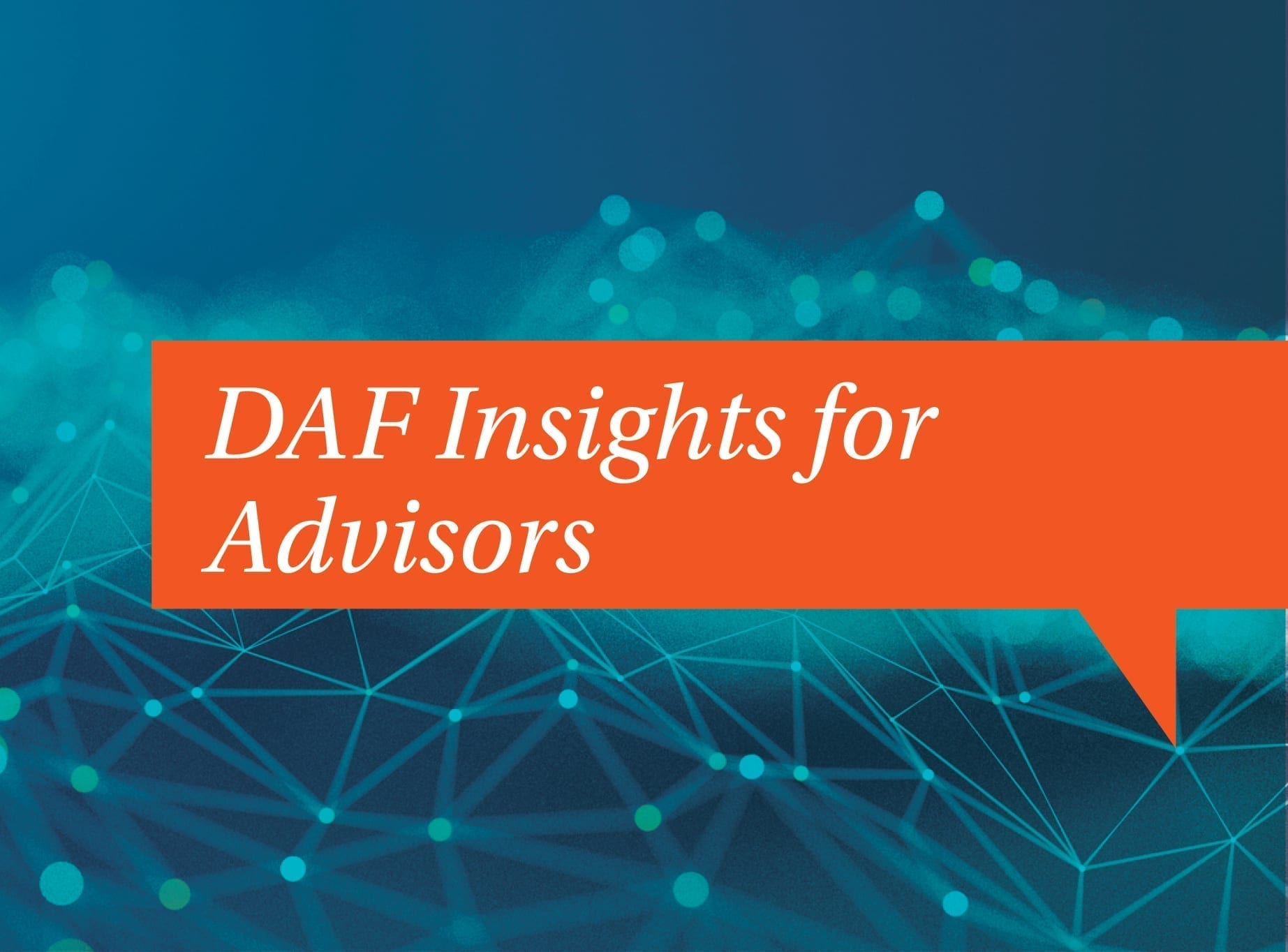Tax Season and the Philanthropic Conversation

How to Talk with Your Clients about Charitable Impact and Tax Efficiency
After years of working with your clients, you know the details of their lives like few others do. You’re with them as they plan for milestones and navigate work, money and life: home purchases, college financing, business loans, health-related expenses and retirement.
Even so, many advisors report that talking about their clients’ charitable activity feels too intimate. And indeed, philanthropy experts have noted that their donors—your clients—often find tax and wealth management professionals reluctant to discuss philanthropic matters.
When you meet with your client this season, or any time throughout the year, you can leverage some of these strategies to break the ice. Conversations like these not only open you to another line of business, they can also help you strengthen your relationship with your existing clients.
We’ve gathered some questions and considerations to help you and your client through the philanthropic conversation. This will also help you interpret their answers and determine if a tax-efficient donor-advised fund (DAF) could be the right strategy for them.
How are your clients already giving?
To get the ball rolling, ask your clients to outline where they give and why. Chances are that they’re more philanthropically engaged than even they realize. Many high-net-worth clients are already involved in a child’s school or on a board, and those organizations may benefit from their generosity. Ask about planned and recurring giving; a DAF can save them time by automating their regular giving.
DAFs also offer legacy plans to help streamline bequest giving. Clients may name a DAF as the recipient of a retirement plan to lessen estate tax burden and appoint children as individual successors to the DAF account so they can continue their tradition of giving. Incorporating regular philanthropic giving into clients’ long-term financial planning will show them you care about helping them meet the whole range of their financial interests.
What would make your clients’ giving easier?
If the first step is asking your clients to articulate where they give and why, this question is more about how. Understanding the frequency, volume and method of your clients’ giving can help you all understand if a vehicle like a DAF might centralize and simplify their efforts.
Seek to understand the amount your clients give, and to familiarize yourself with the logistics of their giving. If your client gives more than $5,000 annually, philanthropy should be considered part of their overall financial strategy. As you know, most American wealth isn’t held in cash. DAFs are more adept than the average nonprofit at accepting gifts of complex assets, and they offer the most tax-advantageous rates for non-cash donations of any vehicle on the market.
Recordkeeping for high-level giving can be a burden, especially if clients’ donations come in the form of stock or complex assets. A DAF can minimize paperwork. Clients submit one Contribution Agreement that covers multiple securities or even multiple kinds of assets and receive a single gift receipt for all contributed assets associated with that agreement. By making a large contribution that can fund several grants, the client has even greater opportunity to minimize tax substantiation paperwork. The DAF sponsor will manage grant and charity-related records.
How can your clients save on taxes and maximize their impact?
Your client could benefit from “bundling”—the act of frontloading a charitable vehicle like a DAF with a large contribution that could help them exceed the standard deduction. Encouraging your client to use a DAF can help you plan for their charitable tax deduction all at once, while helping them set aside some funds to use for giving at their own pace.
Keep an eye out both for changes in tax law, like 2017’s Tax Cuts and Jobs Act, and for changes in your clients’ lives, like a business transition, sale or initial public offering (IPO) of company stock, each of which may impact their philanthropic decision-making. Contributing shares to a DAF may allow them to avoid paying capital gains tax.
Where do we go from here?
If your conversation goes well and your clients are interested in bringing their philanthropy to the next level, they may wish to involve you further. And if your client has interest in long-range giving, like capital campaigns, challenge grants, or international grantmaking, NPT stands ready to assist you and them in making informed philanthropic decisions.
Please don’t hesitate to reach out to our team at npt@nptrust.org or call us at (888) 878-7900. We hope to hear from you soon. We would be proud to be your partner in giving.
NPT does not provide legal or tax advice. This blog post is for informational purposes only and is not intended to be, and shall not be relied upon as, legal or tax advice. The applicability of information contained here may vary depending on individual circumstances.

